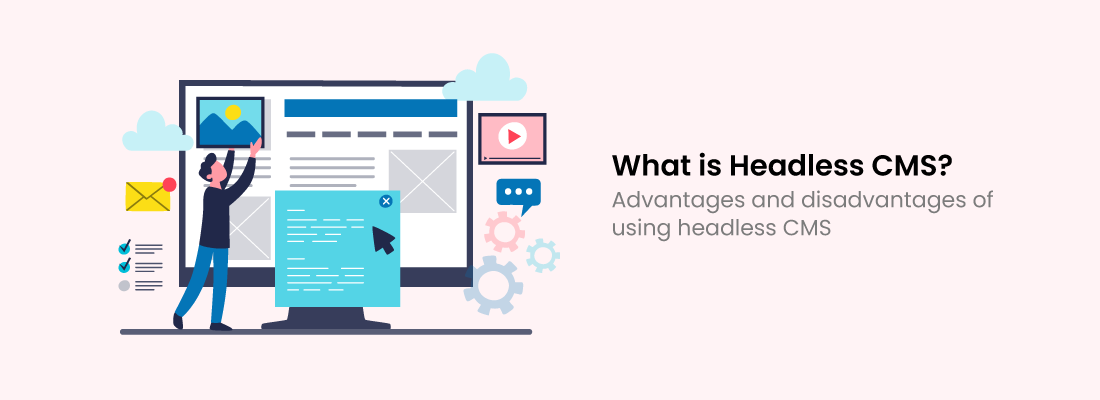Traditional content management systems (CMS) provide website developers with an all-in-one solution for creating and managing website content.
However, with the rise of more complex website designs and the need for flexibility in content delivery, many developers are turning to headless CMS as a solution.
In this blog post, we’ll explore what headless CMS is, why it’s beneficial for building dynamic websites, and some popular headless CMS options.
What is Headless CMS?
Headless CMS is a content management system that separates the content management and content delivery functions of a website.
This means that the CMS only handles the content management aspect and does not dictate how the content is displayed on the website.
Instead, the developer is free to choose the front-end technology of their choice to display the content.
Why Use Headless CMS?
There are several benefits to using headless CMS for building dynamic websites, including:
Flexibility:
Developers have complete control over how content is displayed on the website. This allows for more creative and customized designs
Faster Load Times:
This allows for faster website load times because the front-end technology used can be optimized specifically for that purpose.
Easier Maintenance:
Because the front-end and back-end are separate, it is easier to maintain and update the website.
Better SEO:
This allows for better SEO because the front end can be optimized specifically for search engines.
Popular Headless CMS Options
Strapi:
Strapi is an open-source headless CMS that allows for custom content types and can be used with any front-end technology.
Contentful:
Contentful is a cloud-based CMS that provides a flexible API for content delivery.
Ghost:
Ghost is another CMS specifically designed for blogging and content publishing.
Sanity:
Sanity is a flexible CMS that allows for custom schemas and can be used with any front-end technology.
Advantages and disadvantages of using headless CMS:
Advantages:
Greater Flexibility:
This allows developers to use any front-end technology they prefer, which provides greater flexibility in terms of website design and user experience.
Easier Maintenance:
Headless CMS makes it easier to update and maintain websites, as changes made to the content management system will not impact the front-end design or functionality of the website.
Faster Load Times:
Since headless CMS eliminates the need for rendering on the server side, it can significantly reduce website load times, resulting in a better user experience.
Better Scalability:
Headless CMS allows for more efficient scaling of websites, as front-end and back-end technologies can be updated independently of each other.
Disadvantages
Steep Learning Curve:
Learning how to use headless CMS can be challenging for developers who are used to traditional CMS systems.
More Complex Implementation:
Implementing a headless CMS requires additional front-end development work and API integrations, which can make the development process more complex and time-consuming.
Limited Functionality: Some systems lack functionality that is present in traditional CMS systems, such as built-in e-commerce solutions or SEO optimization tools.
Higher Development Costs: Building a website using headless CMS can be more expensive due to the additional development work required.
Overall, headless CMS offers several advantages and disadvantages that developers should consider when choosing the best CMS for their website.
While it may not be the best option for every website, headless CMS provides greater flexibility, easier maintenance, faster load times, and better scalability for those willing to invest the time and resources required to implement it properly.
Headless CMS vs. Traditional CMS
Content Delivery:
In traditional CMS, the back-end content management system is closely tied to the front-end delivery of content.
This means that the CMS determines how the content is displayed on the website.
In the content management and delivery functions are separated, allowing for more flexibility in how content is displayed.
Front-End Technology:
Traditional CMS systems typically provide a pre-built front-end framework for displaying content.
Headless CMS allows developers to use any front-end technology they prefer, which provides greater flexibility in terms of website design and user experience.
Functionality:
Traditional CMS systems typically provide a range of built-in functionality, such as SEO optimization tools, e-commerce solutions, and security features.
Headless CMS systems may lack some of these built-in functionalities, but they offer greater flexibility in terms of how these functionalities are implemented.
Maintenance:
Traditional CMS systems require regular maintenance and updates, which can be time-consuming and costly.
Headless CMS can be easier to maintain because changes made to the content management system will not impact the front-end design or functionality of the website.
In summary, headless CMS provides developers with greater flexibility in terms of website design, front-end technology, and scalability.
While traditional CMS systems offer built-in functionality and pre-built front-end frameworks, headless CMS provides a more customizable solution for building dynamic websites.
Another advantage of using a headless CMS is that it can improve website performance.
Because the CMS is separated from the front end, the website can load faster since it does not have to wait for the CMS to render content.
Additionally, headless CMSs often use caching mechanisms to improve website speed and reduce server load.
When selecting a headless CMS, it’s important to consider factors such as ease of use, scalability, security, and integrations with other technologies.
Overall, using a headless CMS to build dynamic websites can provide many benefits, including flexibility, customization, and improved performance.
some additional benefits of using a headless CMS to build dynamic websites:
Multichannel content delivery:
A headless CMS can deliver content to multiple channels, such as websites, mobile apps, smartwatches, and more.
This makes it easier for content creators to manage content across different channels without having to create multiple versions of the same content.
Better collaboration:
With a headless CMS, content creators, and developers can work together more efficiently.
Content creators can focus on creating and managing content, while developers can focus on building the front end and integrating the CMS with other technologies.
Easier content updates:
Content updates can be made in real-time, making it easier to keep the website up-to-date.
This is particularly important for websites that need to display constantly changing information, such as news sites or e-commerce stores.
Improved security:
Separating the front end and back ends of a website can improve security.
Since the headless CMS does not handle the frontend display, there is less surface area for attackers to exploit.
Scalability:
It can handle large amounts of content and traffic, making it a good choice for websites that need to scale quickly.
Overall, it can provide many benefits for building dynamic websites.
Separating the front end and backend, it allows for greater flexibility, customization, and collaboration.
Additionally, it can improve website performance, security, and scalability.
Conclusion
Headless CMS provides developers with a flexible and customizable solution for building dynamic websites.
By separating the content management and content delivery functions, developers can choose the front-end technology that best fits their needs.
Popular options include Strapi, Contentful, Ghost, and Sanity.
As website design and development continue to evolve, headless CMS will likely become an increasingly popular option for building dynamic websites.
Read More: CMS PLATFORMS – WHICH ARE THE BEST FOR WEBSITE DEVELOPMENT
























